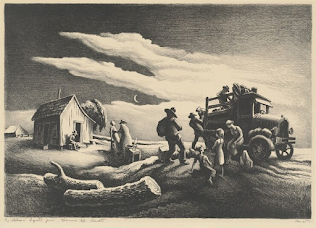Renaissance
The tapestry is a connection of the reinvention of Rome by the Catholic church. The image above is interesting because it's the last supper is where christ is having supper with his disciples where he tells them he knows someone in there will betray him where they show their reaction. The image shows the texture and reaction with woven creation makes it look expressive.
The Metropolitan Museum of Art, "Bernard van Orley and Pieter de Pannemaker, The Last Supper," in Smarthistory, January 25, 2016, accessed February 20, 2023, https://smarthistory.org/bernard-van-orley-and-pieter-de-pannemaker-the-last-supper/.


Hello Michelle, I really like that you chose a tapestry for this assignment. I feel that tapestry work often gets overlooked especially when discussing periods such as the Renaissance that encompass so many popular paintings and sculptures. I find it very fascinating how tapestry artists need to have a fully realized image planned out before they start the process because, as you said, unlike painters such as Da Vinci who can change their minds throughout the process, tapestry artists must work fully across an image in rows. Although I’m sure the colors have faded over the centuries, I feel that the muted earth tones combined with the texture of the fabric add to the image’s somber atmosphere in a truly beautiful way. It’s incredible that rather delicate works of art such as Bernard Van Orley and Pieter de Pannemaker’s The Last Supper were able to survive despite the mass destruction of religious art that was happening around the time. With so many different versions of the last supper from the Renaissance and other times I find it admirable that this piece stands out amongst them. I believe this is due in part to the unique composition, elaborate setting, depth, and unique halo surrounding Christ. When compared to other tapestries of the Medieval period such as The Hunt of the Unicorn it is fascinating to see artist's progression in creating depth, textures, flowing stances, and overall, more realistic-looking tapestries. Great choice of artwork!
ReplyDeleteHi Michelle!
ReplyDeleteI have always enjoyed tapestry and I have quite a few hanging up in my house, they are more modern but I believe it is still the same principal as it was so many years ago. I love the colors that were used in this, the red and gold indicate warmth but also that something could be looming. There is so much intricate detail in this piece of art, and for it to be all woven into fabric makes it very unique.
I have never seen this piece before. I have seen a couple of works depicting the last supper and they are all amazing. It is truly amazing that someone took the time to weave silver and gold thread among the silk and wool to create such a piece. I do agree that texture plays an important role in this particular art piece because it is a tapestry.
ReplyDelete